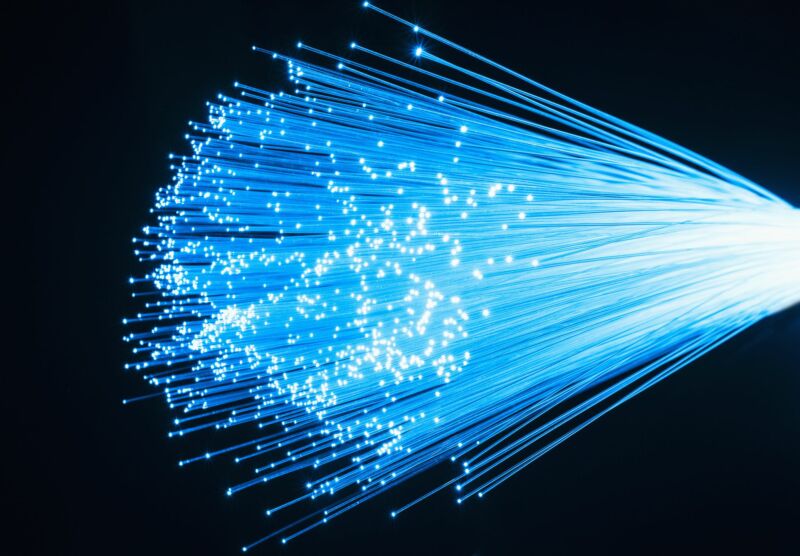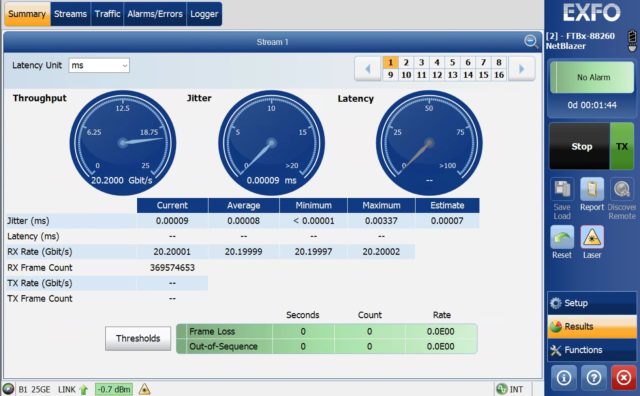
Google Fiber is touting a test that delivered 20Gbps download speeds to a house in Kansas City, calling it a milestone on the path to offering 100Gbps symmetrical Internet. The company said it will also offer new multi-gigabit tiers in the near future.
“We used to get asked, ‘who needs a gig?’ Today it’s no longer a question,” Google Fiber CEO Dinni Jain wrote in a blog post yesterday. “Every major provider in the US seems to have now gotten the gigabit memo, and it’s only going up from there—some providers are already offering 2, 5, 8, even 10 Gig products.”
The Alphabet division recently began selling 2Gbps download speeds with 1Gbps uploads for $100, alongside its longstanding offer of symmetrical 1Gbps speeds for $70 a month. “In the coming months, we’ll have announcements to dramatically expand our multi-gigabit tiers. These will be critical milestones on our journey to 100 Gig symmetrical Internet,” Jain wrote.
Google Fiber is “closer than you might think” to that goal, Jain wrote. “This month, we took our testing out of the lab and into the home, starting with our first trusted tester, Nick Saporito, the Head of Commercial Strategy for GFiber.” Jain provided a screenshot from a test at Saporito’s home in Kansas City showing 20.2Gbps download speeds:

The screenshot doesn’t show upload speeds. While Google Fiber has only hit these speeds in testing, the municipal broadband provider EPB in Chattanooga, Tennessee, recently launched a symmetrical 25Gbps service. It does cost $1,500 per month for residential customers and $12,500 a month for business customers, though.
Google Fiber to expand after years of stagnation
After years of stagnation, Google Fiber last month said it’s aiming to expand its fiber-to-the-home service into five new states. As of now, the ISP offers fiber service in 12 metro areas and wireless home Internet in seven.
A lot of people hoping for faster Internet and more competition were disappointed when Google Fiber “paused” its expansion plans in October 2016. Many Americans still don’t have access to fast, wired Internet or can buy it from only one provider for a high monthly fee.
Despite that, Jain expressed optimism about future improvements in US broadband competition. “We believe that many, if not most, communities across America will ultimately have at least two, if not three, fiber providers and an incumbent coax provider. We see it in communities we plan to build in, and expect investment in the industry to continue,” he wrote.
Getting two or three fiber providers and a cable ISP to most communities is especially unlikely in rural parts of the US, where the federal government is planning to give ISPs tens of billions of dollars just to get one high-speed option to unserved areas.
But in communities with multiple fiber ISPs, “a fiber network alone will no longer be the differentiating factor it once was for internet providers,” Jain wrote. “The unique selling points will be how that network is built to deliver symmetrical multi-gig speed at accessible pricing.”
